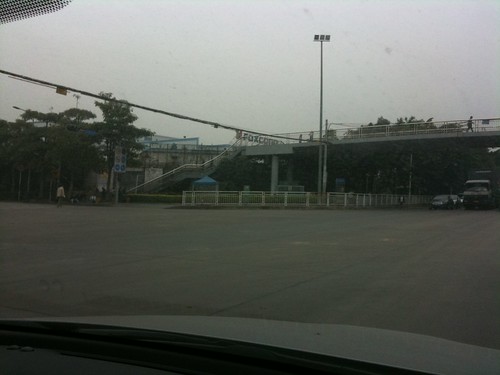I read the 2025 US National Security Strategy (NSS) so you don’t have to when it came out at the end of November 2025. What’s interesting about these NSS documents is that they set a tone that will be difficult to turn around over the next five to ten years.
I have taken the document at face value as it mirrors many of the talking points of US politicians. I have looked at the document through three lens:
- Ireland
- European Union
- UK
(I live in the UK, I am an Irish citizen and Ireland is part of the European Union).
Some of its key European diagnostics are accurate (but could be also said of the US):
- Declining birth rates
- Uncontrolled migration (the authors consider African and muslim migrants to Europe particularly problematic)
- Economic stagnation (the US is in a similar place outside of the top performers of the NASDAQ)
- Deindustrialisation (again a problem that is repeated in the US)
The recently released NSS from the Trump administration represents a an end to an American-led west. It replaces “collective security” with ‘transactional realism’ and targets the European Union’s current political trajectory as a ‘civilisational realignment’. By comparison Russia makes little to no appearance in the document and China is considered mostly in terms of economic power rivalry.
While the US has declared victory in major conflicts via aggressive unilateralism, it now seeks to dismantle “globalist” structures. For Ireland, the UK, and the EU, all are now facing challenges from the US as well as Russia, China and Iran.
European impact
The NSS outlines four pillars that directly impact transatlantic relationships:
- The US views NATO as a burden-sharing network, not a permanent umbrella, and explicitly threatens to withhold support from “free-riders”.
- “Reindustrialization” is the highest priority. The US will use tariffs to force supply chains home. it considers net zero efforts as an economic suicide act.
- The US will bypass EU institutions to cultivate relationships with rightwing populist parties. It views Western Europe’s current migration and social policies as “civilizational erasure”.
- A re-assertion of the Monroe Doctrine. The US claims total dominance over the Western Hemisphere and warns European powers against interfering there.
Impact & Mitigation Strategies
🇮🇪 For Ireland
- The NSS explicitly mentions a “sentimental attachment” to Ireland. Dublin must ruthlessly exploit this cultural link to secure exemptions from new tariffs, bypassing Brussels where necessary.
- Reframe Ireland not as an offshore tax hub, but as a ‘secure node’ in the American supply chain. Emphasise that Irish pharma is safer than Asian alternatives and relies on highly-skilled professionals.
- Ireland’s military neutrality is a liability in this document. it isn’t in a defence agreement with the US and he country can’t meet the 5% spending target that the US expects of ‘allies’. Instead, it must heavily invest in cybersecurity and transatlantic cable protection, framing this as its contribution to “collective security” without violating neutrality.
- Ireland needs to plan, which would take longer to execute; to have a version of Singapore’s poison pill or pufferfish defence strategy. But this would be adapted for Ireland’s own context and needs in order to maintain its neutrality and sovereignty.
🇬🇧 For the United Kingdom
The US questions whether demographic changes in the UK will make it an ally in the future. However, the UK is better positioned than the EU to pivot.
- The NSS seeks “fair, reciprocal trade deals”. The UK should prioritise a bilateral Free Trade Agreement, offering alignment on US export controls (especially regarding China) in exchange for market access.
- The UK cannot afford 5% GDP on defence immediately, but it can get closer than the EU. An option would be to position itself as the “unsinkable aircraft carrier” and the primary partner for the US “Golden Dome” missile defence project, solidifying the special relationship through technology transfer rather than just troop numbers.
- The US Administration hates “regulatory suffocation”. The UK can aggressively deregulate its financial and tech sectors to mirror the US model, making it the preferred “docking station” for US capital in Europe.
- Longer term the UK needs to de-risk critical parts of its economy from the US, and work with other European nations to think about what it would do to have a successful a non-US NATO if the NSS document goes to its natural conclusion.
🇪🇺 For the European Union
The Threat: The document is openly hostile to the EU project, viewing it as a mechanism that “undermines political liberty”. It seeks to encourage internal dissent by supporting right wing populist “patriotic parties”. The 5% defense target is designed to break the current European social contract model.
- The 5% demand is likely a negotiating tactic to force 3% or 3.5%. The EU must immediately announce a massive, coordinated purchase of American military hardware at least in the short term, (while investing in European, friend-shored (Australian, Canadian, Korean, Japanese, Singaporean and Turkish) substitutive systems in the longer term.) The short term move buys tactical goodwill and addresses the immediate capability gap.
- The US priority is winning the economic war with China. The EU has some leverage if it aligns 100% with US export controls and sanctions on Beijing. Brussels must trade access to the Chinese market for security guarantees from Washington in the short term.
- The NSS attacks Europe’s “radical gender ideology” and “Net Zero” focus. (The origins of these beliefs are actually American in nature, a nuance the NSS authors fail to appreciate). To maintain relations, the EU Commission may need to de-politicise trade talks in the short-term, with a view to de-risking in the longer term. The short term trade focus purely on transactional economics and dropping social/climate conditionality in dealings with the US.
Summary
The 2025 NSS is a US roadmap for a post-European world.
- Don’t appeal to “shared values” or “international law.” The NSS explicitly rejects “idealistic” foreign policy.
- Offer concrete, transactional benefits: secure supply chains, purchase orders for US weapons, and alignment against China.
- Move towards a European and friend-shored defence procurement and sustainment over the longer term, as the US may no longer be the arsenal of democracy in the future, if you take the NSS at face value.
- Plan to replace specialist US systems over time as access and replenishment may diminish and have processes to takeover NATO governance in the absence of American leadership.
You can find the US National Security Strategy here.







